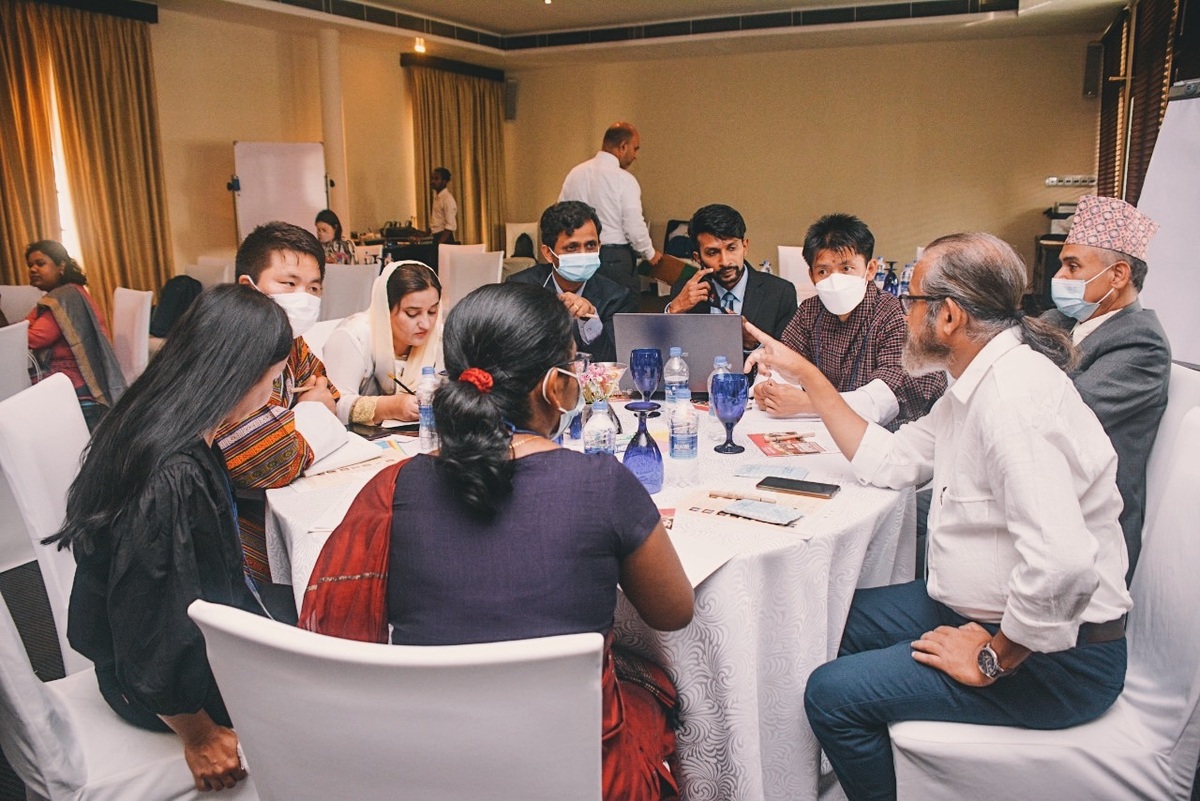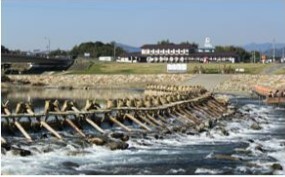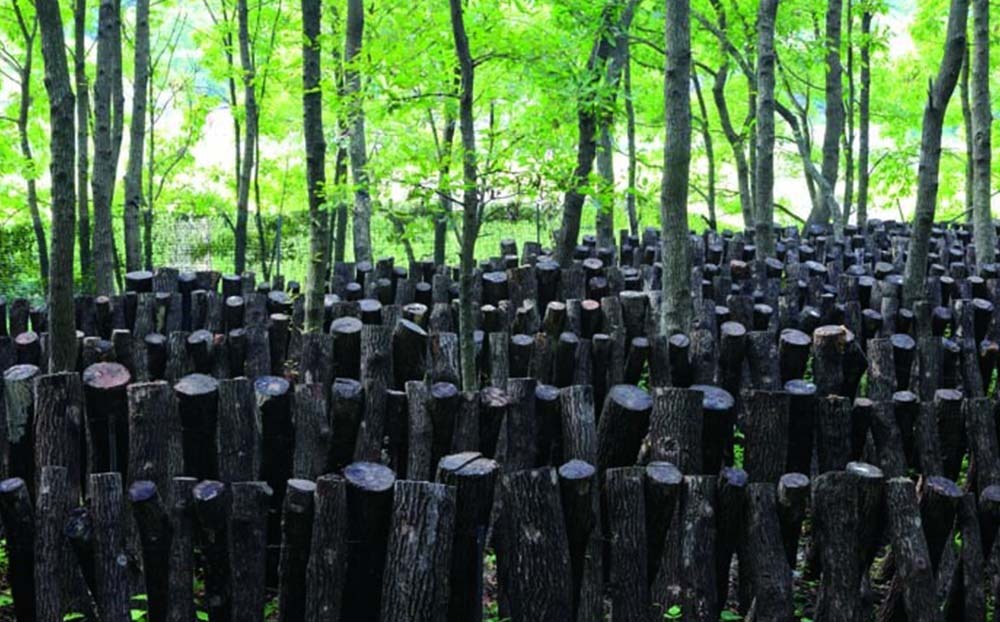
copyright: The Kunisaki Peninsula Usa GIAHS Promotion Association via flickr
Issue
Low rainfall and volcanic soils that are easily infiltrated by rainwater make it difficult to secure water
Solution
Forest management for shiitake mushrooms cultivation and development of interlinked irrigation ponds promote sustainable water resource management
Terrain and volcanic soil that make water supply difficult
The Kunisaki-Usa region consists of six municipalities located on the circular Kunisaki Peninsula jutting out from the southern tip of the Seto Inland Sea in the north-east of Kyushu Island, Japan. It is a rural and mountainous region, spread across an area of 1,323.75㎢ with a population of approximately 180,000. The topography consists of ridges and deep valleys radiating from two central mountain ranges, with narrow plains and many short and steep rivers. Rainfall is low at 1,462mm compared to Japan's annual average rainfall of 1,713mm (Statistics for Kunisaki City from the Japan Meteorological Agency (2003-2010), and for Japan from the Ministry of Land, Infrastructure, Transport and Tourism (1971-2000)). The volcanic soil in the area allows rainwater to percolate easily, so when it does rain, the groundwater quickly runs off to the sea. Therefore, the local people have long faced difficulties in securing water especially for agricultural activities.
The Sawtooth Oak forests with shiitake mushroom cultivation and interlinked irrigation ponds for the sustainable water resource management
In the Kunisaki-Usa region, local communities have used their own wisdom over the years to improve their livelihoods while overcoming water issues. The recharging of water resources with Sawtooth Oak forests and the harvest of high-quality shiitake mushrooms, as well as the water supply system with interlinked multiple irrigation ponds could be considered as a successful nature-based solution (NbS) to the problem of water scarcity. It was also recognised as one of the Globally Important Agricultural heritage Systems (GIAHS) by FAO in 2013.
The Sawtooth Oak trees provide a source of nutrients for growing shiitake mushrooms. This type of log wood shiitake mushroom cultivation has been securing the food system in a region with limited arable land. In addition, the cultivation of shiitake mushrooms has led to the repeated felling and regeneration of the Sawtooth Oak forests, which has stimulated the metabolism of the forests and nourished water resources.
As the topography of the Kunisaki-Usa region does not allow for the construction of large irrigation ponds, local communities have historically developed a technique of linking several small irrigation ponds in order to secure the required water volume. As an example, one of the areas in the region has a system of six linked reservoirs that has been in operation since the 17th century. Water is stored in the uppermost pond for the later stages of rice growth, with three middle and two lower reservoirs supplying water to each other. This interlinked multiple irrigation pond system is maintained on each of the rivers radiating out from the two mountain peaks, making it a distinctive feature of paddy farming in the region.
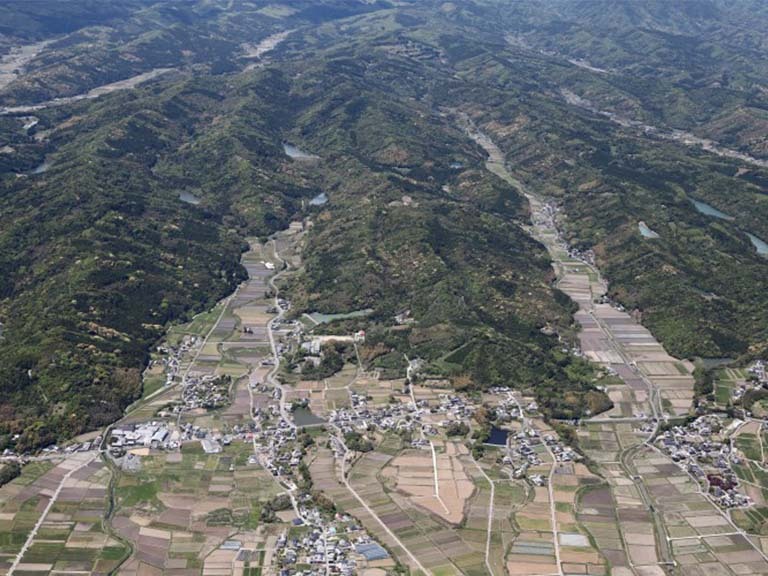
© The Kunisaki Peninsula Usa GIAHS Promotion Association via flickr
Promotion of the local economy through value-added agricultural products
Meticulous and attentive management of Sawtooth Oak forests produces high quality log wood, resulting in a high quality shiitake mushroom harvest. In the Kunisaki-Usa region, GIAHS certification has been used for branding and promotion of value-added and higher priced shiitake mushroom products. Since most of the shiitake farmers in the area are small-scale log wood growers, it is essential for the community to work together to stabilise management, strengthen the production base, improve quality, reduce costs, and improve supply chains in order to maintain sustainable traditional shiitake cultivation techniques. The local government also supports shiitake farmers through various initiatives, such as subsidies for efficient shiitake production, incentives for young farmers and entrepreneurs, and training courses for agricultural instructors.
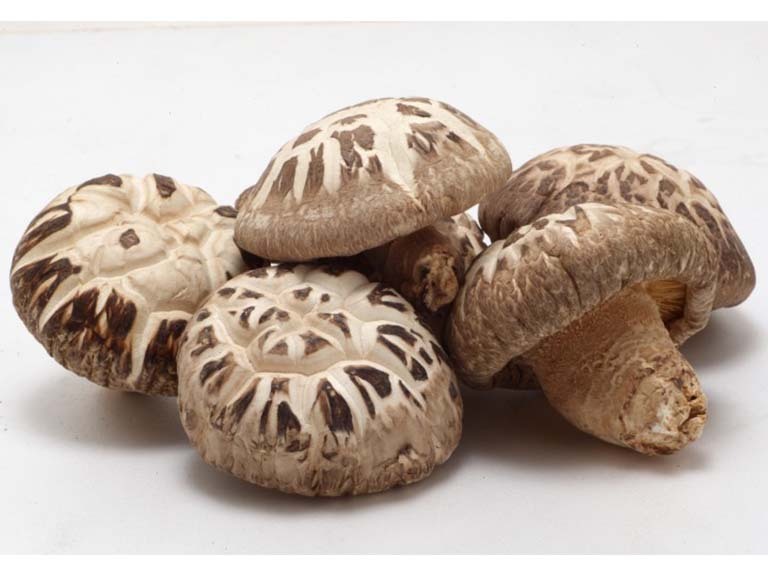
copyright: The Kunisaki Peninsula Usa GIAHS Promotion Association via flickr
Reassessing the multiple benefits of irrigation ponds
The interlinked multiple irrigation ponds were originally developed to secure water resources in the community, but they also bring multiple benefits to the region. Their water storage function reduces the risk of flooding during the rainy and typhoon seasons, and helps adaptation to rapid climate change. The GIAHS designation has also externally recognised the multi-benefits of the irrigation ponds and has strengthened local government-community partnerships for their conservation.
Securing human resource for the dynamic conservation of agricultural systems
As modernisation progressed, these traditional agricultural systems were being lost. This is because, like most rural areas in Japan, the Kunisaki-Usa region is facing a shortage of workers due to the declining and ageing population. At one time, there was a significant decline in the number of people involved in the management of Sawtooth Oak forests and the cultivation of shiitake mushrooms, due to the fact that both activities are labour intensive and notoriously inefficient activities. To tackle those challenges, efforts are being made to reinvigorate the traditional knowledge of the area by strengthening local education for children, to attract the migrated working population back from the cities, and to promote tourism (e.g. training of the GIAHS tour guides, development of tourism promotion materials to inform the value of GIAHS). As a result, there has been a gradual increase in the number of new and diverse farmers entering the shiitake industry, as well as a growing number of local voluntary research groups and entrepreneurs to further enhance the value of GIAHS.
Location


